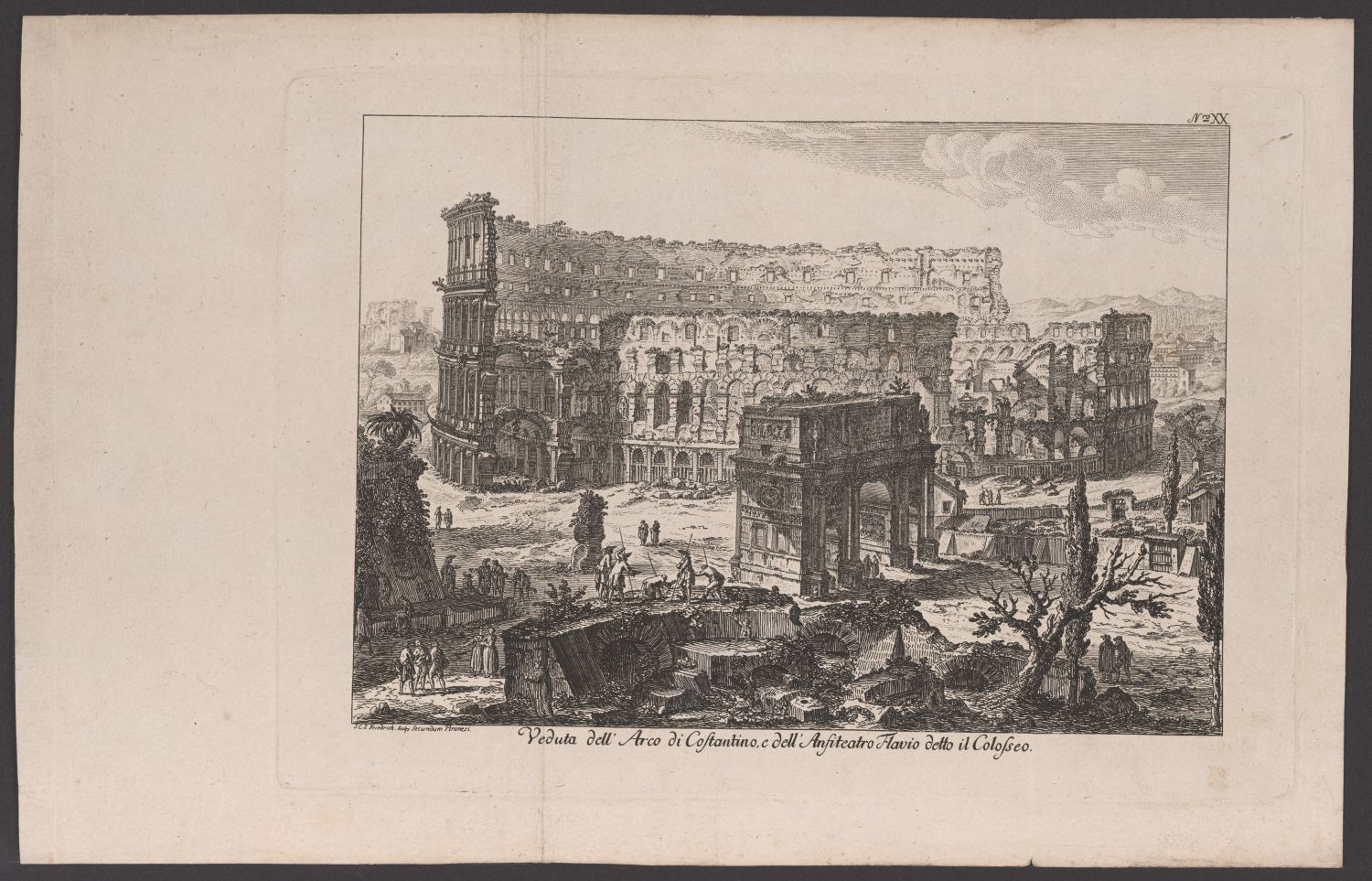Hier eine Ansicht auf den Konstantinsbogen in der Mitte des Blattes und das Flavio-Theater (sog. Collosseum) im Hintergrund als Ruine. Im Vordergrund flanieren Staffagefiguren auf weiteren Ruinenfelsen.
Der Stich wurde von Giovanni Battista Piranesi (1720-1778) entworfen. Gestochen wurde es von dem in Dresden tätigen Kupferstecher Jacob Friedrich (1746-1813). Das Blatt ist Teil einer Sammlung von Radierungen von Friedrich und trägt die Nummer 20.
Signatur: J. C. J. Friedrich sc: secundum Piranesi. N.ro XX.
Beschriftung: Veduta dell' Arco di Costantino, e dell' Anfiteatro Flavio detto il Colosseo.
en

